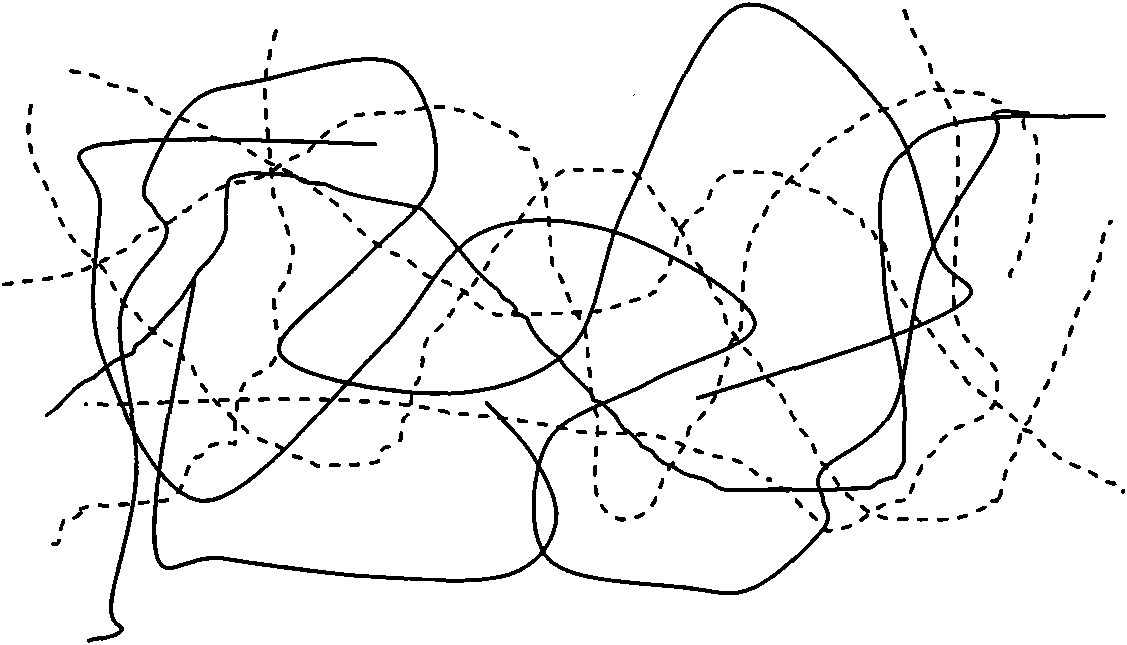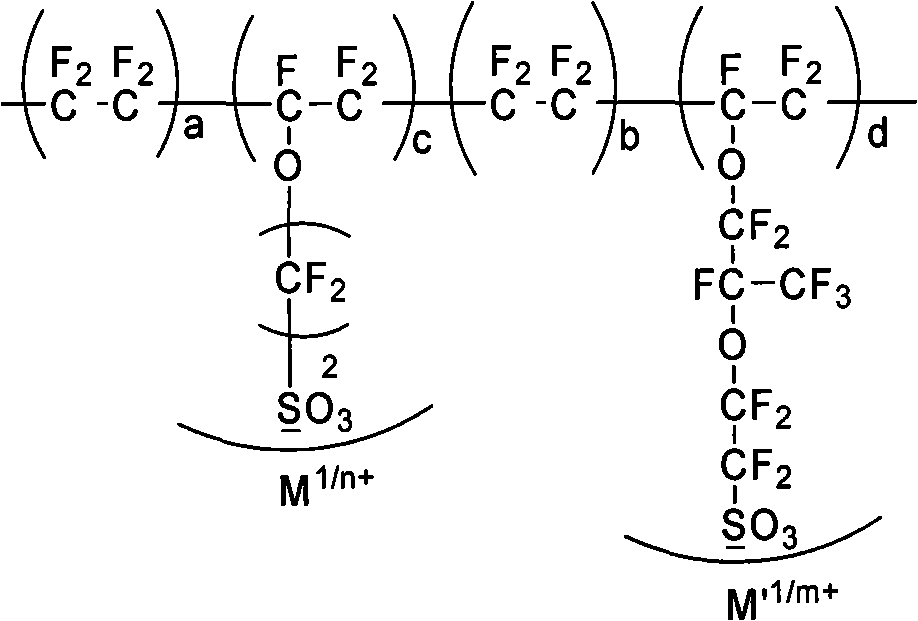Ion exchange membrane of interpenetrating network structure and preparation method thereof
An interpenetrating network structure and ion-exchange membrane technology, applied in the field of polymer functional membrane materials, can solve the problems of difficult control of membrane material composite process, difficulty in large-scale batch production, and environmental pollution of sulfonating agents, so as to reduce membrane protons. Excellent exchange resistance, strong electrochemical corrosion resistance, and simple film production method
- Summary
- Abstract
- Description
- Claims
- Application Information
AI Technical Summary
Problems solved by technology
Method used
Image
Examples
Embodiment 1
[0043] 120g H + Type dry sulfonic acid resin (number-average molecular weight 80,000, exchange capacity 0.95mmol / g) was dissolved in 880g N,N-dimethylformamide (DMF) to obtain sulfonic acid solution (casting solution), and salt-type complete Fluorosulfonic acid type ion exchange resin (structural formula 2, number average molecular weight 80,000, exchange capacity 0.85mmol / g, Ce type) 50g, dissolve and stir evenly, salivate on a smooth and horizontal glass surface, evaporate the solvent at 70°C for 10h Membrane formation, peeling off from the glass to obtain an ion exchange membrane, fluorination with fluorine gas to obtain an ion exchange membrane with an interpenetrating network structure with a film thickness of 50 microns.
Embodiment 2
[0045] 50g H + Type dry sulfonic acid resin (number average molecular weight 150,000, exchange capacity 0.8mmol / g) was dissolved in 880g dimethyl sulfoxide (DMSO) to obtain a sulfonic acid solution (casting solution), and salt type perfluorosulfonic acid type Ion exchange resin (structural formula 3, number average molecular weight 80,000, exchange capacity 1.25mmol / g, La type) 50g, dissolved and stirred evenly, salivated on the surface of a smooth and horizontal Hastelloy plate, heated to 150°C to evaporate the solvent for 1h Forming a film, peeling off from the glass to obtain an ion-exchange membrane with a film thickness of 18 microns and an interpenetrating network structure.
Embodiment 3
[0047] 420gH + Type dry sulfonic acid resin (number average molecular weight 250,000, exchange capacity 1.05mmol / g) was dissolved in 880g N,N-dimethylacetamide (DMAc) to obtain sulfonic acid solution (film casting solution), and salt type full Fluorosulfonic acid type ion exchange resin (structural formula 4, number average molecular weight 80,000, exchange capacity 2.55mmol / g, Mn type) 100g, dissolve and stir evenly, salivate on a smooth and horizontal glass surface, evaporate the solvent at 100°C for 2h Forming a film, peeling off from the glass to obtain an ion-exchange membrane with a film thickness of 150 microns and an interpenetrating network structure.
PUM
| Property | Measurement | Unit |
|---|---|---|
| thickness | aaaaa | aaaaa |
| thickness | aaaaa | aaaaa |
| thickness | aaaaa | aaaaa |
Abstract
Description
Claims
Application Information
 Login to View More
Login to View More - R&D
- Intellectual Property
- Life Sciences
- Materials
- Tech Scout
- Unparalleled Data Quality
- Higher Quality Content
- 60% Fewer Hallucinations
Browse by: Latest US Patents, China's latest patents, Technical Efficacy Thesaurus, Application Domain, Technology Topic, Popular Technical Reports.
© 2025 PatSnap. All rights reserved.Legal|Privacy policy|Modern Slavery Act Transparency Statement|Sitemap|About US| Contact US: help@patsnap.com



